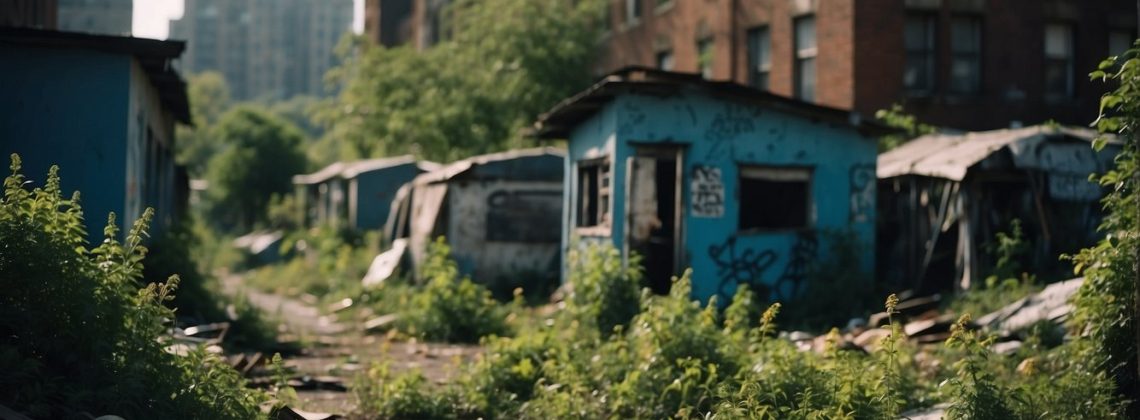
In today’s world, natural and man-made disasters are becoming increasingly common. Whether it’s a hurricane, flood, terrorist attack, or civil unrest, the risk of a disaster striking is always present. While many people are familiar with traditional prepping and survival techniques, urban prepping is a unique subset of prepping that focuses on surviving in a densely populated urban environment. Urban prepping is essential for those who live in cities or heavily populated areas and want to be prepared for any disaster that may strike.
Understanding Urban Prepping
Urban prepping involves much more than simply stockpiling supplies and developing an emergency plan. It requires a comprehensive understanding of the unique challenges and threats that come with living in an urban environment. From limited natural resources to security threats, urban preppers must be prepared to survive in a concrete jungle where traditional survival techniques may not be applicable. Developing a survival plan that takes into account the unique challenges of urban living is essential for anyone who wants to be prepared for a disaster.
Essential Skills for Urban Preppers
To survive in an urban environment during a disaster, urban preppers need to have a unique set of skills. These skills include everything from finding shelter and managing resources to navigating the city and communicating with others. Additionally, urban preppers need to have a solid understanding of how to stay safe in a densely populated area and how to avoid becoming a target for looters or other criminals. By developing these essential skills, urban preppers can increase their chances of surviving a disaster in the concrete jungle.
Key Takeaways
- Urban prepping is a unique subset of prepping that focuses on surviving in a densely populated urban environment.
- Developing a comprehensive understanding of the unique challenges and threats that come with living in an urban environment is essential for urban prepping.
- Essential skills for urban preppers include finding shelter, managing resources, navigating the city, and staying safe in a densely populated area.
Understanding Urban Prepping
When it comes to prepping for disasters, most people tend to think of rural areas and wilderness survival. However, with more than half of the world’s population living in densely populated urban areas, it’s essential to consider prepping for the concrete jungle as well. Urban prepping is the process of preparing for potential disasters or emergencies in an urban setting, such as a city or heavily populated area.
The Urban Environment
The urban environment presents unique challenges and risks that are different from rural areas. In cities, people live in close proximity to each other, which can lead to the rapid spread of disease and illness. Additionally, densely populated areas can make it difficult to access resources like food, water, and medical supplies. In an urban environment, the infrastructure is also more complex, which makes it more susceptible to failure during a disaster.
Challenges of Urban Survival
Surviving in an urban environment during a disaster requires a different set of skills and knowledge than rural prepping. One of the most significant challenges of urban survival is the lack of natural resources. Unlike rural areas, cities have limited access to resources like clean water, food, and shelter. Additionally, in an urban environment, there are more security threats, such as looting, violence, and civil unrest.
Prepping vs. Rural Prepping
While the principles of prepping are the same in both urban and rural areas, there are some significant differences. In an urban environment, preppers must focus on stockpiling supplies that are specific to the challenges of urban survival. For example, preppers in cities may need to stockpile more water and food than those in rural areas. Additionally, preppers in urban areas must focus on securing their living spaces, as the risk of theft and looting is higher.
In summary, urban prepping is a critical aspect of disaster preparedness. Understanding the unique challenges of urban survival and preparing accordingly can make all the difference in a disaster situation.
Developing a Survival Plan
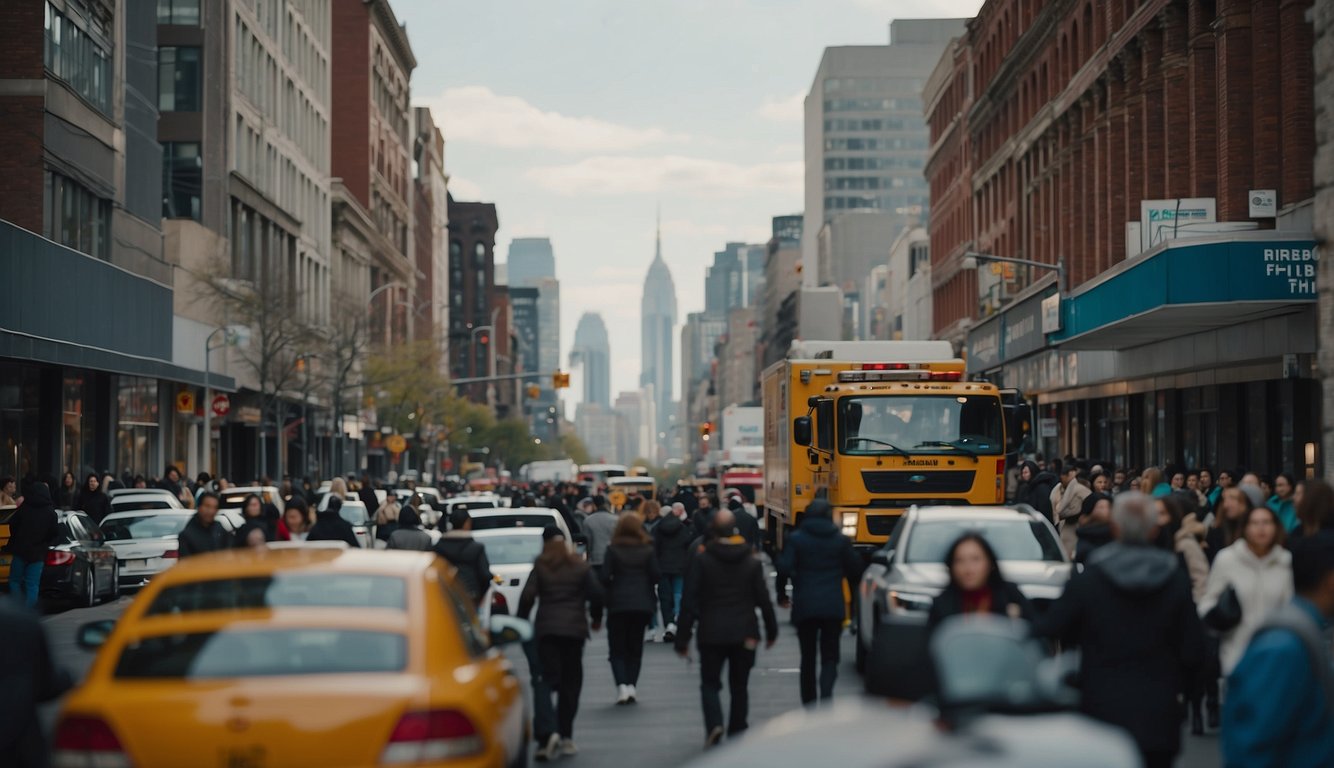
When it comes to urban prepping, developing a survival plan is crucial. The plan should be comprehensive and tailored to the specific risks and challenges of urban living. Here are some key considerations for developing a survival plan:
Assessment of Risks
The first step in developing a survival plan is to assess the risks of the specific urban environment. This includes identifying potential natural disasters, such as earthquakes or floods, as well as man-made disasters like riots or terrorist attacks. It is also important to consider potential hazards like gas leaks, fires, and power outages.
After identifying the risks, it is important to evaluate the likelihood and potential impact of each scenario. This information can be used to prioritize the development of emergency plans.
Emergency Plans
Emergency plans are an essential component of any survival plan. They should be developed for each potential disaster scenario and include clear steps for evacuation, sheltering in place, and accessing necessary resources like food, water, and medical supplies.
It is important to involve all members of the household or community in the development of emergency plans to ensure that everyone is on the same page and knows what to do in the event of a disaster.
Communication Plan
A communication plan is another critical component of any survival plan. In an emergency situation, communication can be difficult or even impossible, so it is important to have a plan in place for how to stay in touch with loved ones and emergency services.
This may include identifying a meeting place or using a designated communication method like a two-way radio. It is also important to have a backup communication plan in case the primary method fails.
Overall, developing a comprehensive survival plan is essential for urban preppers. By assessing risks, developing emergency plans, and creating a communication plan, individuals and communities can be better prepared to survive and thrive in the concrete jungle.
Essential Skills for Urban Preppers
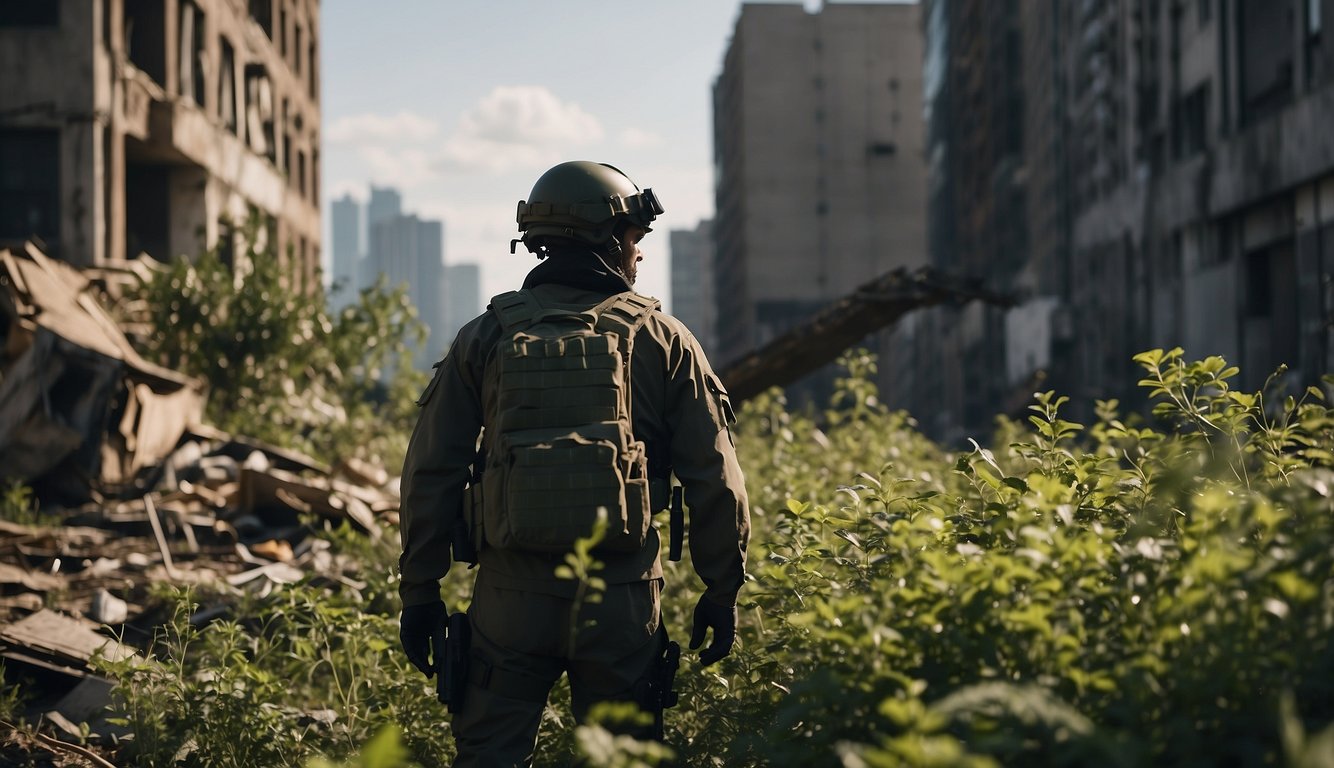
When it comes to urban prepping, there are a few essential skills that every prepper should have to survive a disaster in the concrete jungle. Here are some of the most important skills that urban preppers should possess:
Resourcefulness and Adaptability
Being resourceful and adaptable is crucial for urban preppers. In an emergency situation, resources may be scarce, and the ability to improvise and make the most of what’s available can make all the difference. This means having the skills to find and purify water, build shelter, start a fire, and forage for food. Urban preppers should also have the ability to adapt to changing circumstances and think on their feet.
Self-Defense and Security
In an urban disaster scenario, self-defense and security are paramount. Urban preppers should have the skills to defend themselves and their loved ones from potential threats. This means having the knowledge of basic self-defense techniques, as well as the ability to use weapons such as knives or firearms if necessary. Urban preppers should also have a plan for securing their home and possessions, and be able to identify potential security risks.
First Aid and Medical Knowledge
In an emergency situation, first aid and medical knowledge can mean the difference between life and death. Urban preppers should have the skills to provide basic first aid, such as treating wounds, performing CPR, and stabilizing broken bones. They should also have a basic understanding of common medical conditions and be able to administer medications if necessary. Having a well-stocked first aid kit is also essential for urban preppers.
By possessing these essential skills, urban preppers can increase their chances of surviving a disaster in the concrete jungle. While there are many other skills that can be useful in an emergency situation, these are some of the most important for urban preppers to have.
Stockpiling and Managing Resources

Preparing for a disaster in an urban setting requires a different approach to resource management than in a rural area. In an urban environment, resources such as food, water, and energy can become scarce quickly. Therefore, stockpiling and managing resources are crucial to ensure survival.
Food Storage and Preservation
Stockpiling food is essential to urban prepping. The goal is to have enough food to last for at least a few weeks. When it comes to food storage, it’s important to keep in mind that space is limited in urban areas. Therefore, it’s essential to store food in a compact and efficient manner. Canned goods, dried fruits, and nuts are great options for food storage. It’s also important to rotate the food to ensure that it doesn’t go bad.
Preserving food is another important aspect of urban prepping. Canning, dehydrating, and freezing are all effective ways to preserve food. It’s important to have the necessary equipment and supplies on hand to preserve food. Vacuum sealers, canning jars, and dehydrators are all essential tools for food preservation.
Water Supply and Purification
Water is essential for survival, and in an urban environment, it can become contaminated quickly. Therefore, it’s important to have a reliable water supply and purification system. Stockpiling water is essential, and it’s recommended to have at least one gallon of water per person per day. It’s also important to have a water filtration system on hand to purify water if the supply becomes contaminated.
Water filters are essential for urban prepping. There are many different types of water filters available, including straw filters, gravity filters, and pump filters. It’s important to choose a filter that is reliable and efficient. It’s also important to have spare filters on hand in case the primary filter becomes clogged or damaged.
Energy and Power Solutions
In an urban environment, energy and power can become scarce quickly. Therefore, it’s essential to have a reliable source of energy and power. Solar panels, generators, and batteries are all effective solutions for power in an urban environment. It’s important to have the necessary equipment and supplies on hand to generate and store power.
Solar panels are a great option for urban prepping. They are efficient, reliable, and easy to install. Generators are also a great option for power in an urban environment. They are reliable and can generate a large amount of power. Batteries are essential for storing power generated by solar panels or generators. It’s important to have spare batteries on hand in case the primary battery becomes damaged or depleted.
In conclusion, stockpiling and managing resources are crucial for urban prepping. Food storage and preservation, water supply and purification, and energy and power solutions are all essential aspects of resource management in an urban environment. By being prepared and having the necessary tools and supplies on hand, urban preppers can ensure their survival in the event of a disaster.
Shelter and Safety in the Urban Jungle
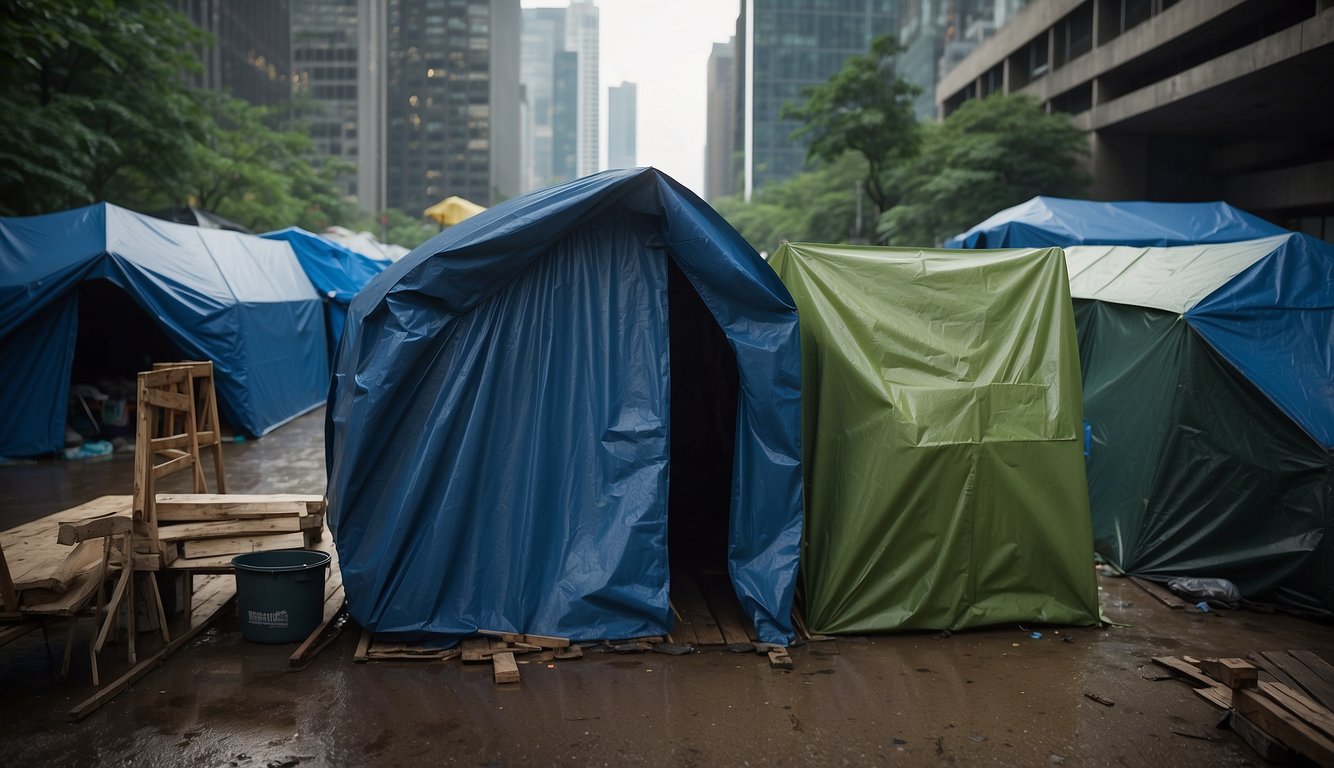
Choosing an Urban Shelter
When it comes to urban prepping, choosing the right shelter is crucial. In an emergency situation, your home may be damaged or destroyed, and you may need to find a new place to stay. Apartments and other types of urban housing can provide shelter, but it is important to choose a location that is safe and secure.
When choosing an apartment or other type of urban shelter, consider the following factors:
- Location: Choose a location that is not in a flood zone or other high-risk area. Look for a building that is well-maintained and has good security features.
- Space: Limited storage space is a common issue in urban areas. Look for a shelter with enough space to store emergency supplies and equipment.
- Accessibility: Choose a shelter that is easy to access in case of an emergency. Look for a location that is close to public transportation or major roads.
Making Use of Limited Space
One of the biggest challenges of urban prepping is making use of limited space. In an apartment or other small urban shelter, it can be difficult to store all of the necessary emergency supplies and equipment.
To make the most of limited space, consider the following tips:
- Use vertical space: Install shelving units and storage racks to make use of vertical space.
- Choose multi-purpose items: Look for items that can serve multiple purposes, such as a foldable cot that can also be used as a chair.
- Prioritize essential items: Focus on storing the most essential items, such as food, water, and first aid supplies.
Safety and Security Measures
In addition to choosing the right shelter and making use of limited space, it is important to take safety and security measures to protect yourself in an emergency situation.
Consider the following safety and security measures:
- Install a deadbolt lock: A deadbolt lock can help prevent break-ins and keep you safe.
- Have a plan: Create an emergency plan and make sure everyone in your household knows what to do in case of an emergency.
- Stay alert: Stay aware of your surroundings and be prepared to evacuate quickly if necessary.
By taking these steps, you can increase your chances of surviving a disaster in the concrete jungle.
Urban Mobility and Transportation
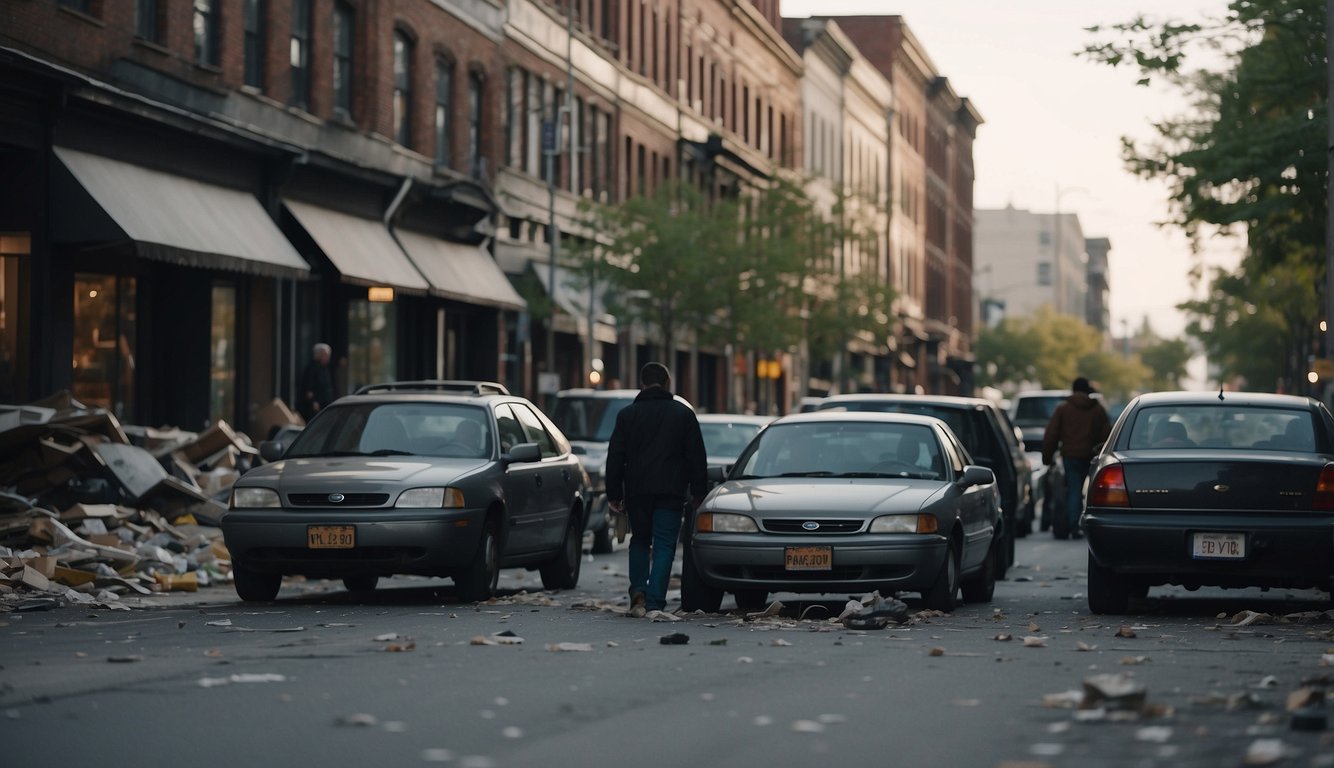
When it comes to surviving a disaster in an urban environment, mobility and transportation are crucial factors to consider. In this section, we will discuss some of the key aspects of urban mobility and transportation that every prepper should keep in mind.
Navigating the Cityscape
Navigating through a city during a disaster can be challenging, especially if you are not familiar with the area. Therefore, it is essential to have a good understanding of the cityscape and its landmarks. This knowledge can help you identify safe routes and avoid potentially dangerous areas.
Using maps and GPS devices can be helpful, but it is also important to have a backup plan in case of a power outage or loss of signal. Preppers should consider carrying a physical map of the city and familiarize themselves with the surrounding areas.
Public Transportation Use
Public transportation can be a convenient and efficient way to navigate through a city during a disaster. However, it is important to be aware of the potential risks associated with using public transportation during an emergency.
Preppers should be familiar with the different types of public transportation available in their city, including buses, subways, and trains. They should also be aware of the potential risks associated with using public transportation, such as overcrowding and delays.
Bug Out Location and Plan
Having a well-planned bug out location is crucial for urban preppers. This location should be easily accessible and provide a safe haven during a disaster. It is also important to have a backup plan in case the primary location becomes compromised.
When planning a bug out location, preppers should consider factors such as proximity to essential resources, safety, and accessibility. They should also have a well-defined plan for getting to the location quickly and safely.
In summary, urban mobility and transportation are critical factors to consider when preparing for a disaster in an urban environment. Preppers should have a good understanding of the cityscape, be familiar with different types of public transportation, and have a well-planned bug out location and plan. By taking these steps, preppers can increase their chances of surviving a disaster in the concrete jungle.
Emergency Gear and Supplies
Building an Emergency Kit
When it comes to surviving a disaster in the concrete jungle, having an emergency kit is essential. One should gear up with the necessary supplies that can help them stay safe and secure during emergencies. Building an emergency kit requires careful planning and consideration of the potential risks and dangers that one may face in their urban environment.
The emergency kit should include essential items such as food, water, shelter, and first aid supplies. It is important to pack non-perishable food items that can last for a long time and do not require any cooking or refrigeration. Water is also crucial, and it is recommended to pack at least one gallon of water per person per day. Shelter items such as a tent, sleeping bag, or tarp can provide protection from the elements.
Essential Items for Urban Preppers
Urban preppers should have essential items in their emergency kit that can help them survive in the concrete jungle. These items include a multi-tool, a flashlight, and a first aid kit. A multi-tool is a versatile tool that can be used for various purposes such as cutting, opening cans, and tightening screws. A flashlight can help in navigating through dark areas and signaling for help. A first aid kit should include basic medical supplies such as bandages, antiseptic wipes, and pain relievers.
Technology and Tools
Technology and tools can also be useful in emergency situations. A portable charger can keep one’s phone charged and help in communication during emergencies. A NOAA weather radio can provide updates on weather conditions and potential hazards. Other useful tools include a whistle, a fire starter, and a compass.
In conclusion, building an emergency kit with essential items and technology can help urban preppers survive a disaster in the concrete jungle. It is important to gear up with the necessary supplies and plan ahead to ensure one’s safety and security during emergencies.
Surviving Specific Urban Disasters
Natural Disasters
Natural disasters can strike at any time, and it is important to be prepared for them. In urban areas, the most common natural disasters are earthquakes, hurricanes, floods, and wildfires. To survive these disasters, it is important to have a plan in place and to be prepared with the necessary supplies.
One of the most important things to have in case of a natural disaster is a supply of clean water. It is recommended to have at least one gallon of water per person per day for at least three days. It is also important to have non-perishable food items, such as canned goods, that can be eaten without cooking. A first aid kit, flashlights, and extra batteries are also crucial supplies to have on hand.
Civil Unrest and Pandemics
Civil unrest and pandemics are two types of emergency situations that can occur in urban areas. Civil unrest can include riots, protests, and other forms of social unrest, while pandemics can include outbreaks of infectious diseases.
To survive civil unrest, it is important to stay informed about the situation and to avoid areas where violence or looting is occurring. It is also important to have a plan in place for evacuation, and to have supplies such as food, water, and first aid kits ready to go.
In the case of a pandemic, it is important to follow the recommendations of health officials and to practice good hygiene, such as washing hands regularly and avoiding close contact with others. It is also important to have a supply of food, water, and other necessities on hand, in case of quarantine or other restrictions.
Power Outages and Infrastructure Failure
Power outages and infrastructure failure can occur for a variety of reasons, including severe weather, equipment failure, and cyber attacks. To survive these situations, it is important to have a plan in place for backup power and to have supplies such as flashlights, batteries, and alternative heating sources.
It is also important to have a supply of non-perishable food and water, as well as any necessary medications or medical supplies. In the case of a prolonged power outage, it may be necessary to evacuate to a location with power and other necessary resources.
Overall, surviving specific urban disasters requires preparation, planning, and the right supplies. By staying informed and taking necessary precautions, individuals can increase their chances of survival in emergency situations.
Community and Networking
Urban prepping is not only about individual preparedness but also about leveraging community resources and forming alliances with neighbors. Collaboration with local institutions can also be a valuable asset in surviving a disaster in the concrete jungle.
Leveraging Community Resources
One of the key advantages of urban areas is the abundance of community resources available to residents. These resources can include community centers, libraries, and local businesses. In the event of a disaster, these resources can be utilized to provide shelter, food, and other essential supplies. It is important to identify these resources before a disaster strikes and establish a plan for utilizing them in case of an emergency.
Forming Alliances with Neighbors
Neighbors can be a valuable asset in surviving a disaster. It is important to establish relationships with neighbors before a disaster strikes. This can be done by attending community events, participating in neighborhood watch programs, and simply introducing oneself to neighbors. In the event of a disaster, neighbors can provide mutual aid and support. They can also help to secure the neighborhood and prevent looting.
Collaborating with Local Institutions
Local institutions such as schools, hospitals, and emergency services can also be valuable assets in surviving a disaster. It is important to establish relationships with these institutions before a disaster strikes. This can be done by attending community meetings, volunteering, and participating in emergency drills. In the event of a disaster, these institutions can provide shelter, medical care, and other essential services. They can also provide valuable information and communication channels.
Overall, community and networking are essential components of urban prepping. By leveraging community resources, forming alliances with neighbors, and collaborating with local institutions, urban preppers can increase their chances of surviving a disaster in the concrete jungle.
Long-Term Urban Survival
When it comes to long-term urban survival, there are a few key strategies that can help individuals and families stay safe, healthy, and self-sufficient in the face of disaster. In this section, we’ll explore some of the most important considerations for sustainable living in an apartment, as well as tips and tricks for urban foraging and gardening, and self-sufficiency strategies.
Sustainable Living in an Apartment
For those living in an apartment unit, resilience is key. This means having a plan in place for emergencies, as well as making sure that your living space is as sustainable as possible. Some tips for sustainable apartment living include:
- Investing in energy-efficient appliances and light bulbs
- Using natural cleaning products to reduce exposure to chemicals
- Composting food scraps to reduce waste and create nutrient-rich soil for gardening
- Storing water and non-perishable food items in case of emergencies
Urban Foraging and Gardening
Urban foraging and gardening can be a great way to supplement your food supply and increase self-sufficiency. Some tips for urban foraging and gardening include:
- Identifying edible plants in your area and learning how to safely harvest them
- Starting a container garden on your balcony or windowsill
- Joining a community garden or urban farming organization to learn more about sustainable gardening practices
- Learning how to preserve food through canning, drying, and other methods
Self-Sufficiency Strategies
Finally, self-sufficiency strategies are key to long-term urban survival. This means having the skills and knowledge necessary to provide for your basic needs, even in the face of disaster. Some self-sufficiency strategies to consider include:
- Learning how to purify water and ensure its safety for drinking
- Developing basic first aid skills and keeping a well-stocked first aid kit on hand
- Learning how to start a fire without matches or a lighter
- Investing in a solar-powered generator or other alternative energy sources
By focusing on sustainable living, urban foraging and gardening, and self-sufficiency strategies, individuals and families can increase their resilience and improve their chances of surviving a disaster in the concrete jungle.
Frequently Asked Questions
What are the essential items to include in an urban disaster survival kit?
When preparing for an urban disaster, it is important to have a well-stocked survival kit. Essential items to include in an urban disaster survival kit include non-perishable food items, water, a first aid kit, a multi-purpose tool, a flashlight, extra batteries, a radio, a whistle, a map of the area, and cash.
How can one secure their apartment or home against potential urban disasters?
Securing an apartment or home against potential urban disasters involves taking several precautions. These include reinforcing doors and windows, securing heavy furniture, and fastening shelves and cabinets to walls. It is also important to have an emergency escape plan and to practice it regularly.
What are the best strategies for finding and storing water in a city during an emergency?
In an urban emergency, finding and storing water can be challenging. Strategies for finding water include looking for public water sources such as fire hydrants or water towers, and collecting rainwater. Storing water involves having a supply of water on hand and using water storage containers.
What skills are most important to learn for self-sufficiency in an urban survival scenario?
In an urban survival scenario, self-sufficiency is key. Important skills to learn include first aid, navigation, and self-defense. It is also important to learn how to forage for food and find water sources.
How should you plan an evacuation route from a city in the event of a disaster?
Planning an evacuation route from a city in the event of a disaster involves identifying the safest and most efficient route out of the city. This may involve using public transportation, such as buses or trains, or driving a personal vehicle. It is important to have a backup plan in case the primary route is blocked.
What are the most effective ways to communicate with others during an urban emergency when traditional systems fail?
During an urban emergency, traditional communication systems may fail. Effective ways to communicate with others include using two-way radios, leaving messages on message boards or graffiti, and using hand signals or flags to communicate with others from a distance. It is also important to have a designated meeting place and to communicate the plan to all members of the group.

Leave a Reply